#Saumaise
Explore tagged Tumblr posts
Photo

3 septembre 1653 : mort de l'humaniste et philologue Claude Saumaise ➽ http://bit.ly/Claude-Saumaise Médecine, jurisprudence, théologie, philosophie, histoire ecclésiastique, antiquités grecques et romaines, langues anciennes, langues orientales : dépeint par Ménage comme le plus honnête et le plus sociable des hommes, Claude Saumaise avait tout fouillé
#CeJourLà#3Septembre#Saumaise#humaniste#philologue#littérature#édecine#jurisprudence#théologie#philosophie#religion#antiquités#langues#biographie#histoire#france#history#passé#past#français#french#news#événement#newsfromthepast
4 notes
·
View notes
Text
Fern's Nehalennia Deep Dive: pt 1

Titles:
Stuurvrouw (Steerswoman), Vrouwe van de Noordzee (Lady of the North Sea), Wildmother
Meaning name Nehalennia
We're not really sure what the name Nehalennia means. She was honoured in an area that covers Roman, Briton, and Germanic tribes and peoples, so even her origin is unknown. Several theories of meaning are:
"recently caught" or "recently salted" - from "Net hael inne". (Huygens)
"new market" - from "ne halle" (Claude de Saumaise)
"new moon" - from "Nea Selene" (Olivier Vredius)
"Neel brings in" - from "Neel (personal name) hael inne" (Jacobus Lydius)
"to give food", "to provide" - from "Naera-Laena" (Laurens Pieter van de Spiegel)
"Goddess of the sea" - from "Neach Lenn" "exalted sea" (Marquis Du Chasteler)
"Virgin of sorrow/sadness" - from "Neh al Léan" (Eloi Johanneau)
"night, friendly moon-Goddess" - from "Neha-Lennia" (D. Buddingh)
"spinning Goddess" - from "Nera" or "Nere" meaning spinning (Grimm)
"pouring, gifting" - from "Neihen" or "Neehan" (H. Kern)
"Lady/Mother who envelopes/enrobes" - from "Neha Lenn" (H. Hardenberg)
"mist/fog" - from Proto Indo-European (PIE) *nebʰ- (wikipedia)
"spirits of the dead" - from Greek "nekués" and the PIE "nek-e/o" "to bring death" (wikipedia)
"leader", "steerswoman", or "She who leads a ship safely over sea" (Gijsseling) This interpretation is considered most likely, new information and spellings literally surfaced, helping Gijsseling come to this conclusion.
The Surfacing of Nehalennia
In 1647 in Domburg, Zeeland, the remains of a temple were found. Inside it, they discovered votive stones dedicated to a local Goddess: Nehalennia. Back then there wasn't really a historical society, and preserving the cultus of a pagan Goddess was not a priority. Some of the stones were moved to a church, where they were displayed underneath the stairs, with a leaky roof. Other stones were used as lawn ornaments for a rich proprietor. After a lightning strike the church burnt down, and the stones were lost. Many of the stones who had been on the lawn were irrevocably damaged.
But Nehalennia was not ready to be forgotten. On the 14th of April 1970 fisherman K.J. Bout found some strange stones in his fishing nets. He could have tossed them back, but instead he realized the value of these stones. He contacted the National Museum of Antiquities in Leiden who sent a representative. While waiting, Bout fished up more stones, and part of what looked like a temple. Bout made his ship available for several diving trips, and over 240 votive stones surfaced.
Many of the stones depict a woman, sitting on a throne, or standing with one foot on the bow of a ship. She wears a very distinct pereline (a short shoulder cape), and holds a basket filled with apples, pears, and breads. Standing next to her sits her loyal dog companion. Most of the stones also hold an inscription, thanking Deae Nehalleniae for safe travel over sea. From the inscriptions we also learn that many of the people who made an offering were traders, hailing from Italy, Cologne, Brittain, Trier, and southern France. Through this magnificent find, we have learned a lot more about our "local" Goddess Nehalennia.
Over the years, more votive stones surfaced. Found in Trier, Cologne, Tongeren, and even some that might be Nehalennia in Brittain. All stones and remains have been dated to be between 150-250CE, and worshipers all come from a large area that encompasses Gallia Belgica, Germania Inferior, Germania Superior en Britannia. Even though Nehalennia is clearly also found outside the Netherlands, us Dutch people have laid a claim on her. Especially since two of her temples have both been found in Zeeland, she is seen as a local Goddess, and one we are very proud of. [Link to the Masterpost]
#deity#paganism#pagan#paganblr#dutch pagan#dutch#myth#mythology#goddess#north sea#nehalennia#fern's practice
31 notes
·
View notes
Text

THE DESCRIPTION OF SAINT MARGARET MARY ALACOQUE The Mystic and Promoter of the Sacred Heart of Jesus Feast Day: October 16
St. Margaret Mary was born at L'Hautecour (located in the Verosvres commune), Burgundy, France, on July 22, 1647 to Claude Alacoque and Philiberte Lamyn. Her father died when she was about eight years old, leaving her family in a precarious financial situation and at the mercy of some rapacious relatives.
As a young girl, she was stricken with rheumatic fever, and the resulting paralysis forced her to be bedridden for the next four years until the age of fifteen. It was during this time that she developed an intense devotion to the Blessed Sacrament and made a vow to the Blessed Virgin to consecrate herself to religious life. During these hard times Margaret continued her devotion to the Blessed Sacrament and Christ made His presence known to her. She later wrote, "At that time, all my desire was to seek happiness and comfort in the Blessed Sacrament."
She had three more visions over the next year and a half in which Jesus instructed her in a devotion that was to become known as the Nine Fridays. Christ also inspired Margaret Mary to establish the Holy Hour and to receive Holy Communion on the first Friday of every month. In the final revelation, the Lord asked that a feast of reparation be instituted for the Friday after the octave of Corpus Christi.
On May 25, 1671, at the age of 23, Margaret entered the Order of the Visitation convent at Paray-le-Monial. She pronounced her final vows on November 6, 1672 and took the name Mary. During her retreat before her profession, she had a vision of Jesus in which He said, "Behold the wound in my side, wherein you are to make your abode, now and forever."
The Lord continued to appear to her in visions and on December 27, 1673, the feast of Saint John the Evangelist, as she knelt at the grill before the exposed Blessed Sacrament, she experienced a vision in which the Lord told her to take the place that Saint John had occupied at the Last Supper, and that she would act as His instrument.
Jesus revealed His Sacred Heart as a symbol of His love for mankind, saying, "My divine Heart is so inflamed with love for mankind… that it can no longer contain within itself the flames of its burning charity and must spread them abroad by your means."
She described that His Heart was on fire and surrounded by a crown of thorns. Our Lord told her that the flames represented His love for humanity, and the thorns represented man’s sinfulness and ingratitude. Jesus informed her that her mission was to establish the devotion to His Most Sacred Heart, and He revealed twelve promises that He would bestow upon all those who practice the devotion.
Margaret Mary told her superior, Mother de Saumaise, about the visions and was treated with contempt. She was forbidden to carry out any of the religious devotions that had been requested of her in her visions. She became ill from the strain, and her superior, looking for a divine sign, vowed to believe the visions if Margaret Mary was cured. Margaret Mary prayed and recovered, and her superior kept her promise. There was a group within the convent who remained skeptical, however. Her superior ordered Margaret Mary to present her experiences to theologians, but they were judged to be delusions.
St. Claude de la Colombière, a holy and experienced Jesuit, arrived as confessor to the nuns, and in him Margaret Mary recognized the understanding guide that had been promised to her in the visions. He became convinced that her experiences were genuine and adopted the teaching of the Sacred Heart that the visions had communicated to her. Her revelations were made known to the community when they were read aloud in the refectory from a book written by St. Claude.
Her revelations in the open, she encouraged devotion to the Sacred Heart, especially among her novices, who observed the feast in 1685. A chapel was built in 1687 at Paray in honor of the Sacred Heart, and devotion began to spread in other convents of the Visitidines, as well as throughout France.
Margaret Mary became ill and died on October 17, 1690 during the fourth anointing step of the last rites. As she received the Last Sacrament, she said, "I need nothing but God, and to lose myself in the heart of Jesus."
The devotion to the Sacred Heart of Jesus was officially recognized and approved by Pope Clement XIII in 1765, seventy-five years after her death. Margaret Mary was declared Venerable in March, 1824 by Pope Leo XII, and she was pronounced Blessed on September 18, 1864 by Pope Pius IX. The inauguration of the Feast of the Sacred Heart of Jesus occurred in 1856, and Margaret Mary was canonized by Benedict XV in 1920.
#random stuff#catholic#catholic saints#margaret mary alacoque#marguerite-marie alacoque#margarita maría alacoque#sacred heart of jesus#sagrado corazón de jesús
4 notes
·
View notes
Text
okay...
You unleashed my fury now :
Úrsula K Le Guin
Ann Radcliffe
Agatha Christie
Jane Austen
Colette
Margaret Cavendish (first science fiction female autor ever? Like Hello???? )
Christine de Pizan
Margaret Atwood
Charlotte Brontë
Anne Brontë
Emily Brontë
Virginia Wolf
Octavia Estelle Butler
Gertrude Stein
Edith Wharton
Angela Carter
Isabel Allende
Doris Lessing
Elena Ferrante
Louisa May Alcott
Lucy Maud Montgomery
Madame de La Fayette
Anne Bradstreet
Fred Vargas
Madeleine de Scudéry
Madeleine de L'Aubépine (earliest female erotic poet)
Charlotte Saumaise de Chazan
Anne Desclos
George Sand
Virginie Despentes
Gloria Steinem
Mary Shelley wrote Frankenstein and basically half invented science fiction as we know It now, but okay...🙄 Also she totally Lost her virginity on her moms grave , like DAMN.
SIMONE DE BEAUVOIR!!!!!!!!!!!!!!
Ughhhhhh
Annie Ernaux
Françoise Sagan
Anna Gavalda
Emilia Pardo Bazán
Elvira Lindo
María de Zayas y Sotomayor
Teresa of Ávila
Hrotsvitha of Gandersheim
Clare Booth Luce
Sophie Treadwell
Aphra Behn
Enheduanna
Mary Ann Evans (George Eliot)
Margaret of Valois
Alice Bradley Sheldon (James Tiptree Jr)
Madame or Countess d'Aulnoy (invented the term “conte de fée” or fairytale, you all!!)
Marie de France (first female autor in french ever that we know of)
And almost every single text / nivel signed by Anonymous IS suspected to be female written.
....All of this to say to that Twitter user : Fuck off!
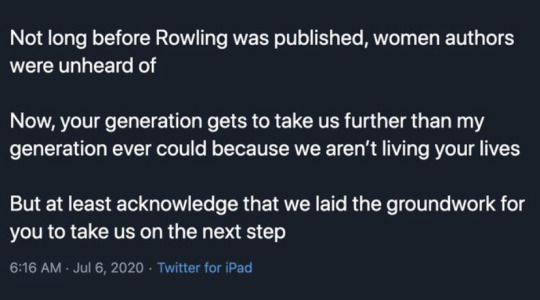
Can’t believe Jane Austen wrote Pride and Prejudice in the 2000s
And in 2015 Emily Brontë released literary clsssic Wuthering Heights
Thank God someone paved the way for them…
135K notes
·
View notes
Text
Nicolas-Claude Fabri de Peiresc
Un humaniste ? Il est intéressant de noter que Claude Saumaise, contemporain de Gassendi, érudit comme lui[10] et ami de Peiresc, caractérise le magistrat aixois de manière similaire : un « protecteur » et un « animateur » des « études ». En effet, il écrit, dans une lettre adressée aux frères Dupuy[11] quelques semaines après la mort de Peiresc : « il m’est impossible de reprendre courage, moi…

View On WordPress
0 notes
Photo
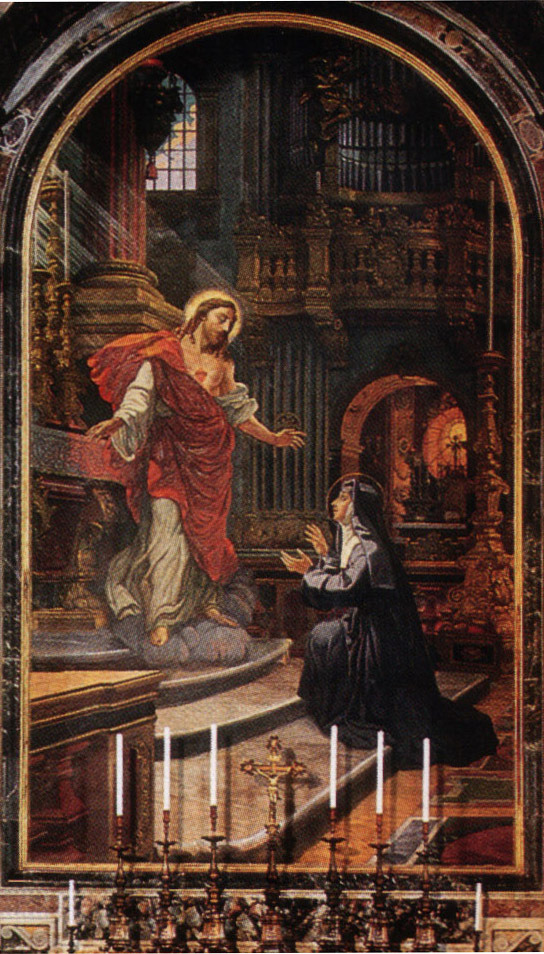
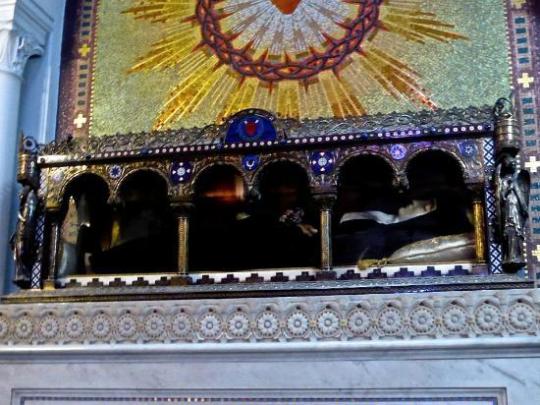
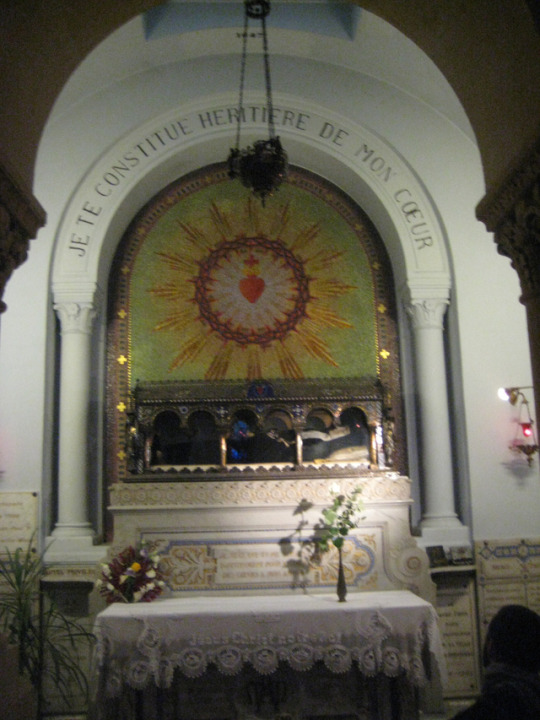
Saint of the Day – 16 October – St Margaret Mary Alacoque (1647-1690) V.H.M. Virgin, Nun, Mystic, Saint and Apostle of the Sacred Heart. Born Marguerite-Marie Alacoque on 22 July 1647 at L’Hautecourt, Burgundy, France – 17 October 1690 of natural causes. Patronages against polio, against the death of parents, devotees of the Sacred Heart, polio patients. She was Beatified on 18 September 1864 by Pope Blessed Pius IX and Canonised on 13 May 1920 by Pope Benedict XV. When her tomb was canonically opened in July 1830, two instantaneous cures were recorded to have taken place. Her incorrupt body rests above the side altar in the Chapel of the Apparitions, located at the Visitation Monastery in Paray-le-Monial and many striking blessings have been claimed by pilgrims attracted there from all parts of the world.
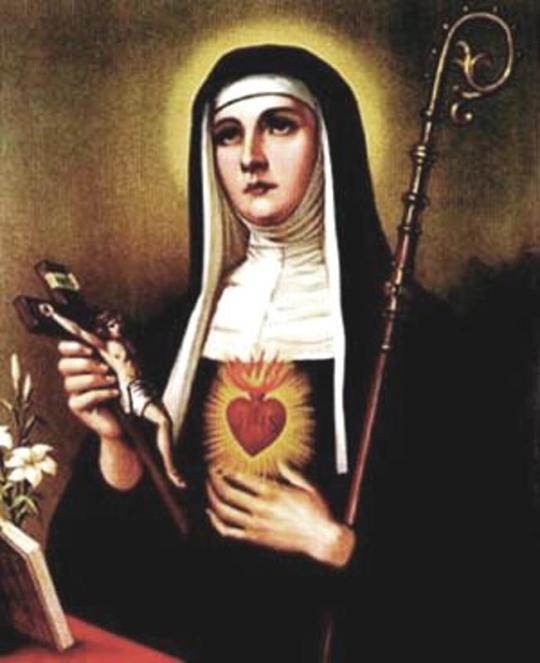
She was born in 1647 AD at Janots, a small town of Burgundy, the fifth of seven children, of Claude and Philiberte Alacoque. Her father was a prosperous notary; the family owned a country house and farmland and had some aristocratic connections. Margaret’s godmother was a neighbour, the Countess of Corcheval. As a small child Margaret spent a great deal of time with her but these visits were brought to a sudden end by the death of the countess. The father died of pneumonia when Margaret was about eight and this was another severe shock to her. Claude had loved his family dearly but had been short-sighted and extravagant and his death put them in hard straits. However, Margaret was sent to school with the Urbanist Sisters at Charolles. She loved the peace and order of the convent life and the nuns were so impressed by her devotion that she was allowed to make her First Communion at the age of nine (normally around the age of 12 at that time). A rheumatic affliction kept her bedridden for four years. During that time she was brought home, where some of her father’s relatives had moved in and taken over the direction of the farm and household. She and her mother were treated almost as servants. This painful situation grew more acute after Margaret’s recovery, for the relatives tried to regulate all her comings and goings. Not allowed to attend church as often as she pleased, the young girl was sometimes seen weeping and praying in a corner of the garden. It grieved her deeply that she could not ease things for her mother. Her eldest brother’s coming of age saved the day, for the property now reverted to him and the family again had undisputed possession of their home.
Philiberte had expressed a hope that Margaret would marry; the girl considered this but at the age of twenty, inspired by a vision, she put aside all such thoughts and resolved to enter a convent. While awaiting admission, she tried to help and teach certain neglected children of the village. At twenty-two she made her profession at the convent of the Visitation at Paray-le-Monial. The nuns of the Order of the Visitation, founded in the early years of the seventeenth century by St. Francis de Sales, were famed for their humility and selflessness. As a novice Margaret excelled in these virtues. When she made her profession, the name of Mary was added and she was called Margaret Mary. She began a course of mortifications and penances which were to continue, with more or less intensity, as long as she lived. We are told that she was assigned to the infirmary and was not very skillful at her tasks.
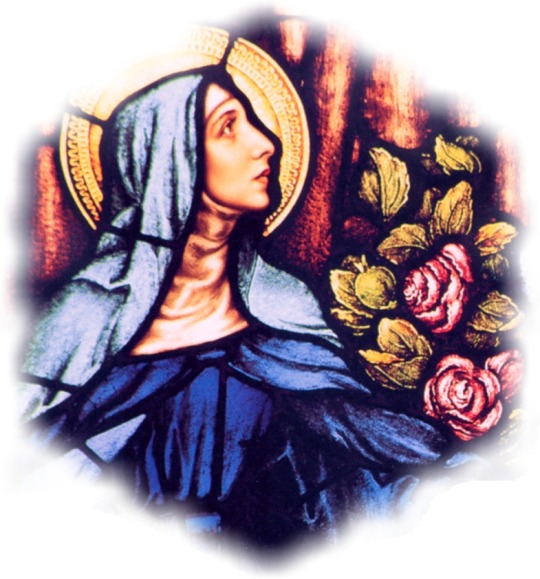
Some years passed quietly in the convent and then Margaret Mary began to have experiences which seemed to be of supernatural origin. The first of these occurred on 27 December 1673, when she was kneeling at the grille in the chapel. She felt suffused by the Divine Presence and heard the Lord inviting her to take the place which St John had occupied at the Last Supper. The Lord told her that the love of His heart must spread and manifest itself to men and He would reveal its graces through her. This was the beginning of a series of revelations covering a period of eighteen months. When Margaret Mary went to the Superior, Mother de Saumaise, with an account of these mystical experiences, claiming that she, an humble nun, had been chosen as the transmitter of a new devotion to the Sacred Heart, she was reprimanded for her presumption. Seriously overwrought, Margaret Mary suffered a collapse and became very ill. The Mother Superior reflected that she might have erred in scorning the nun’s story and vowed that if her life were spared, she would take it as a sign that the visions and messages were truly from God. When Margaret Mary recovered, the Superior invited some theologians who happened to be in the town—they included a Jesuit and a Benedictine—to hear the story. These priests listened and judged the young nun to be a victim of delusions. Their examination had been a sheer torture to Margaret Mary. Later a Jesuit, Father Claude de la Columbiere, talked to her and was completely convinced of the genuineness of the revelations. He was to write of the nun and to inaugurate this devotion in England.
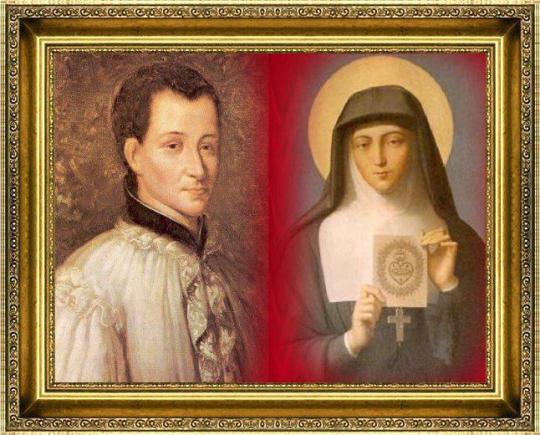
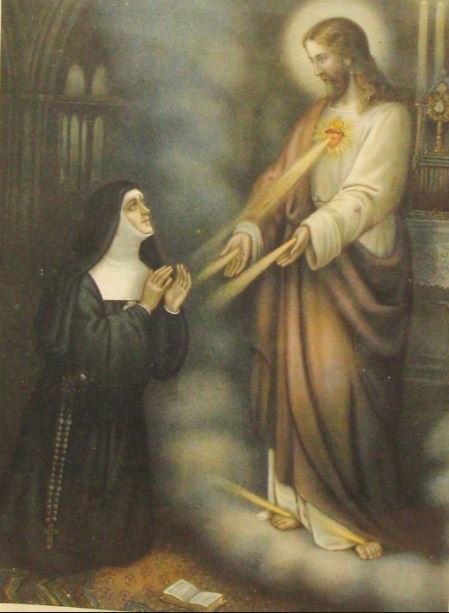

For many years, Margaret Mary suffered from despair, from self-inflicted punishments and also from the slights and contempt of those around her. In 1681, Father Claude returned to the convent and died there the following year. Margaret Mary was appointed assistant and novice-mistress by a new Mother Superior who was more sympathetic towards her. In 1683, opposition in the community ended after an account of Margaret Mary’s visions was read aloud in the refectory from the writings left by Father Claude, who had taken it upon himself to make known to the world the nun’s remarkable experiences. Mother Melin was elected Superior and named Margaret Mary her assistant. That she was finally vindicated was to her a matter of indifference. She later became Novice Mistress, saw the convent observe the feast of the Sacred Heart privately beginning in 1686 and two years later, a chapel was built at the Paray-le-Monial to honour the Sacred Heart; soon observation of the feast of the Sacred Heart spread to other Visitation convents. When she was forty-three, while serving a second term as assistant superior, Margaret Mary fell ill. Sinking rapidly, she received the Last Sacraments, saying, “I need nothing but God, and to lose myself in the heart of Jesus.” Margaret Mary died at the Paray-le-Monial on October 17, 1690. Margaret Mary was canonised a saint in 1920. She, St John Eudes, and St Claude La Colombiere are called the ��Saints of the Sacred Heart”; the devotion was officially recognised and approved by Pope Clement XIII in 1765, seventy-five years after her death.
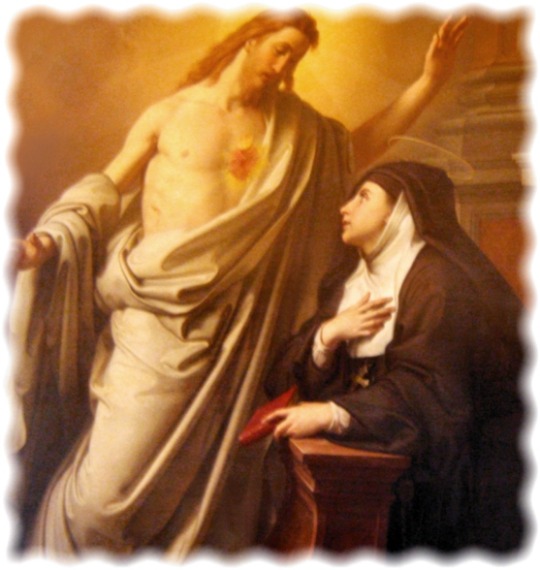

(via AnaStpaul – Breathing Catholic)
35 notes
·
View notes
Link
In 1689, St. Margaret Mary confided in a letter to her superior Mother de Saumaise about a vision of Our Lord she had recently experience...
0 notes
Quote
Holland is a country where the demon gold is seated on a throne of cheese, and crowned with tobacco.
Claude Saumaise, cited in Roelof Murris, La Hollande et les Hollandais au XVII et XVIIIème siècles, vus par les Français (Paris, 1925), 256.
4 notes
·
View notes
Text
Fermati: il Cuore di Gesù è con me!
Si tratta della pratica di portare lo scudo del Sacro Cuore (chiamato anche “Fermati!”). Un tempo essa era diffusa fra i cattolici ed esprimeva la nostra gratitudine per l’amore che Gesù Cristo ci manifesta, il desiderio di ripagarlo col nostro amore e di essere accolti sotto la sua protezione. Sì, perché lo scudo del Sacro Cuore è una potente protezione messaci a disposizione contro i rischi che corriamo ogni giorno. Basta portarlo con sé. Non c’è bisogno di farlo benedire, perché Pio IX estese la sua benedizione a tutti gli “scudi”. Esso è un emblema con l’immagine del Sacro Cuore e il motto: Fermati, il Cuore di Gesù è con me! Venga a noi il tuo Regno! Lo possiamo portare ovunque e dovunque: in tasca, nella borsa, nel portafoglio assieme alle foto dei nostri cari. Così diciamo al maligno: Alt! Si fermi ogni iniquità, ogni passione disordinata, ogni pericolo che ci minaccia dall’esterno o dall’interno, perché il Cuore di Cristo ci protegge. Ma diciamo anche al Signore: ti amo, in te confido, fai il mio cuore simile al Tuo!
Origine dello scudo del Sacro Cuore
S. Margherita Maria scrive nella sua lettera del 2 marzo 1686 alla superiora, Madre Saumaise: “Egli desidera che lei faccia fare degli scudi con l’immagine del Sacro Cuore affinché tutti coloro che vogliono rendergli onore lo mettano nelle loro case, e ordini altri più piccoli da portare addosso”. (10) Così nasceva la devozione dello scudo del Sacro Cuore. La santa lo fabbricava con le sue mani e lo portava sempre con sé, invitando le novizie a fare altrettanto. All’inizio la pratica fu autorizzata nei monasteri della Visitazione. Più tardi venne diffusa largamente dalla venerabile A-M Rémuzat (1696-1730), visitazionista, alla quale Nostro Signore fece sapere in anticipo i danni che avrebbe causato la peste a Marsiglia. Con l’aiuto delle sue consorelle, la religiosa diffuse migliaia di scudi nella città colpita. La storia racconta che poco dopo la peste cessò come per miracolo e le persone malate ebbero grazie straordinarie. Dopodiché la pratica si estese ad altre città e nazioni. (11)
Tutti gli scudi sono già benedetti
Nel 1870 Pio IX approvò definitivamente lo “scudo del Sacro Cuore”, dicendo che era “ispirato dal Cielo” e aggiungendo: “Benedico questo Cuore e voglio che tutti quelli che siano fatti d’accordo a questo modello ricevano la stessa benedizione, senza bisogno che un sacerdote la rinnovi”. (13)
Oggi, la vita di tutti è piena di insidie e pericoli. Perché allora non ricorrere con fede allo scudo del Sacro Cuore? Lo possiamo portare addosso, metterlo a casa o nel materiale scolastico dei bambini, nei luoghi di lavoro e di riposo. Così terremo fede al noto detto di S. Paolo: “Se Dio è per noi, chi sarà contro di noi?” (Rom 8,31). Di sicuro non esiste pericolo dal quale Egli non ci possa salvare. E se poi ci arrivano le difficoltà per suo divino volere, questo scudo rappresenterà ugualmente la nostra fedeltà ai disegni della Provvidenza, nella certezza che non saremo mai abbandonati.
“Il” Sacro Cuore di Gesù e di Maria
Così, al singolare, San Giovanni Eudes si riferiva a entrambi i cuori, come se fossero un tutt’uno, a causa della loro vicendevole identificazione. Sul verso della Medaglia Miracolosa rivelata a S. Caterina Labouré si vedono l’uno accanto all’altro, quello di Gesù circondato da spine, quello di Maria trafitto da una spada. In occasione del centenario della Consacrazione del mondo al Sacro Cuore, Giovanni Paolo II ha detto: “Dopo San Giovanni Eudes, che ci ha insegnato a contemplare Gesù, il cuore dei cuori, nel cuore di Maria e a farli amare entrambi, il culto al Sacro Cuore si è diffuso (…)”.(14)
Scriveva Plinio Corrêa de Oliveira. “Col Cuore di Maria ogni terrore si dissipa, ogni incertezza si chiarisce. Il Cuore di Maria è la Porta del Cielo, spalancata agli uomini del nostro tempo (…) Nel giorno in cui avremo legioni di persone veramente devote al Cuore Immacolato di Maria, il Cuore di Gesù regnerà in tutto il mondo.” (15)
Le affinità tra Paray-le-Monial e Fatima non si contano. In entrambi si promette la vittoria finale, chiedendo la consacrazione e la riparazione degli uomini per corrispondere all’amore offeso di Dio. Il trionfo del Cuore Immacolato preannunciato alla Cova da Iria non è altro che il trionfo di Cristo per Maria.
Giovanni Paolo II nel 2002 approva e fa pubblicare il documento della Congregazione per il Culto Divino e la Disciplina dei Sacramenti, dove tra l’altro si afferma:
“Non vi è dubbio infatti che la devozione al Cuore del Salvatore è stata ed è tuttora una delle espressioni più diffuse e più amate della pietà ecclesiale (166). Come hanno spesso ricordato i Romani Pontefici, la devozione al Cuore di Cristo ha un solido fondamento nella Scrittura (167). La devozione al Sacro Cuore costituisce una grande espressione storica della pietà della Chiesa per Gesù Cristo, suo Sposo e Signore; essa richiede un atteggiamento di fondo fatto di conversione e riparazione, di amore e gratitudine, di impegno apostolico e di consacrazione nei confronti di Cristo e della sua opera salvifica. Perciò la Sede Apostolica e i Vescovi la raccomandano, ne promuovono il rinnovamento (172).” Direttorio su Pietà Popolare e Liturgia- Congregazione per il Culto Divino e la Disciplina dei Sacramenti- Libreria Editrice Vaticana 2002”.
Fai da te
E' possibile richiedere gli scudi del Sacro Cuore presso il Monasterodella Visitazione di Maria http://www.monasterovisitazione-baggiovara.org/scudo_del_s_cuore.html
Ma è anche molto semplice farli, si stampano con una stampante a colori in carta comune, poi si incollano su un cartone e per proteggerli li avvolgiamo in cellofan.
Sono già benedetti, non hanno bisogno di altro.
Queste sono le foto di quelli che ho fatto io:
Qua vi lascio i file per stamparli, grandi per appendere e piccoli per portare con noi Formato tascabile Quadretto grande
Foglietto
0 notes
Photo

3 septembre 1653 : mort de l'humaniste et philologue Claude Saumaise ➽ http://bit.ly/Claude-Saumaise Médecine, jurisprudence, théologie, philosophie, histoire ecclésiastique, antiquités grecques et romaines, langues anciennes, langues orientales : dépeint par Ménage comme le plus honnête et le plus sociable des hommes, Claude Saumaise avait tout fouillé
#CeJourLà#3Septembre#Saumaise#humaniste#philologue#littérature#édecine#jurisprudence#théologie#philosophie#religion#antiquités#langues#biographie#histoire#france#history#passé#past#français#french#news#événement#newsfromthepast
3 notes
·
View notes
Photo

3 septembre 1653 : mort de l'humaniste et philologue Claude Saumaise ➽ https://j.mp/2OQ601b Médecine, jurisprudence, théologie, philosophie, histoire ecclésiastique, antiquités grecques et romaines, langues anciennes, langues orientales : dépeint par Ménage comme le plus honnête et le plus sociable des hommes, Claude Saumaise avait tout fouillé
#CeJourLà#3Septembre#Saumaise#humaniste#philologue#littérature#édecine#jurisprudence#théologie#philosophie#religion#antiquités#langues#biographie#histoire#france#history#passé#past#français#french#news#événement#newsfromthepast
4 notes
·
View notes
Photo

4 septembre 1759 : mort de l’historien Paul-François Velly ➽ https://j.mp/2YVfXhv Débutant fort tard sa carrière littéraire, l’abbé Velly s’illustra principalement par son « Histoire de France », à une époque où on ne lisait plus de relations de ce type rédigées avant le milieu du siècle précédent : si la clarté, la douceur et l’élégance de sa diction rendirent notre histoire plus lisible, son récit, honnête, comporte cependant des omissions et erreurs que ses adversaires n’ont pas manqué de souligner en termes parfois peu amènes
#CeJourLà#4Septembre#Saumaise#humaniste#philologue#littérature#édecine#jurisprudence#théologie#philosophie#religion#antiquités#langues#biographie#histoire#france#history#passé#past#français#french#news#événement#newsfromthepast
3 notes
·
View notes
Photo

3 septembre 1653 : mort de l'humaniste et philologue Claude Saumaise ➽ https://j.mp/2OQ601b Médecine, jurisprudence, théologie, philosophie, histoire ecclésiastique, antiquités grecques et romaines, langues anciennes, langues orientales : dépeint par Ménage comme le plus honnête et le plus sociable des hommes, Claude Saumaise avait tout fouillé
#CeJourLà#3Septembre#Saumaise#humaniste#philologue#littérature#édecine#jurisprudence#théologie#philosophie#religion#antiquités#langues#biographie#histoire#france#history#passé#past#français#french#news#événement#newsfromthepast
4 notes
·
View notes
Photo

4 septembre 1759 : mort de l’historien Paul-François Velly ➽ https://j.mp/2YVfXhv Débutant fort tard sa carrière littéraire, l’abbé Velly s’illustra principalement par son « Histoire de France », à une époque où on ne lisait plus de relations de ce type rédigées avant le milieu du siècle précédent : si la clarté, la douceur et l’élégance de sa diction rendirent notre histoire plus lisible, son récit, honnête, comporte cependant des omissions et erreurs que ses adversaires n’ont pas manqué de souligner en termes parfois peu amènes
#CeJourLà#4Septembre#Saumaise#humaniste#philologue#littérature#édecine#jurisprudence#théologie#philosophie#religion#antiquités#langues#biographie#histoire#france#history#passé#past#français#french#news#événement#newsfromthepast
1 note
·
View note
Photo

4 septembre 1759 : mort de l’historien Paul-François Velly ► http://j.mp/2YVfXhv Débutant fort tard sa carrière littéraire, l’abbé Velly s’illustra principalement par son « Histoire de France », à une époque où on ne lisait plus de relations de ce type rédigées avant le milieu du siècle précédent : si la clarté, la douceur et l’élégance de sa diction rendirent notre histoire plus lisible, son récit, honnête, comporte cependant des omissions et erreurs que ses adversaires n’ont pas manqué de souligner en termes parfois peu amènes
#CeJourLà#4Septembre#Saumaise#humaniste#philologue#littérature#édecine#jurisprudence#théologie#philosophie#religion#antiquités#langues#biographie#histoire#france#history#passé#past#français#french#news#événement#newsfromthepast
1 note
·
View note
Photo

3 septembre 1653 : mort de l'humaniste et philologue Claude Saumaise ► http://j.mp/2OQ601b Médecine, jurisprudence, théologie, philosophie, histoire ecclésiastique, antiquités grecques et romaines, langues anciennes, langues orientales : dépeint par Ménage comme le plus honnête et le plus sociable des hommes, Claude Saumaise avait tout fouillé
#CeJourLà#3Septembre#Saumaise#humaniste#philologue#littérature#médecine#jurisprudence#théologie#philosophie#religion#antiquités#langues#biographie#histoire#france#history#passé#past#français#french#news#événement#newsfromthepast
1 note
·
View note